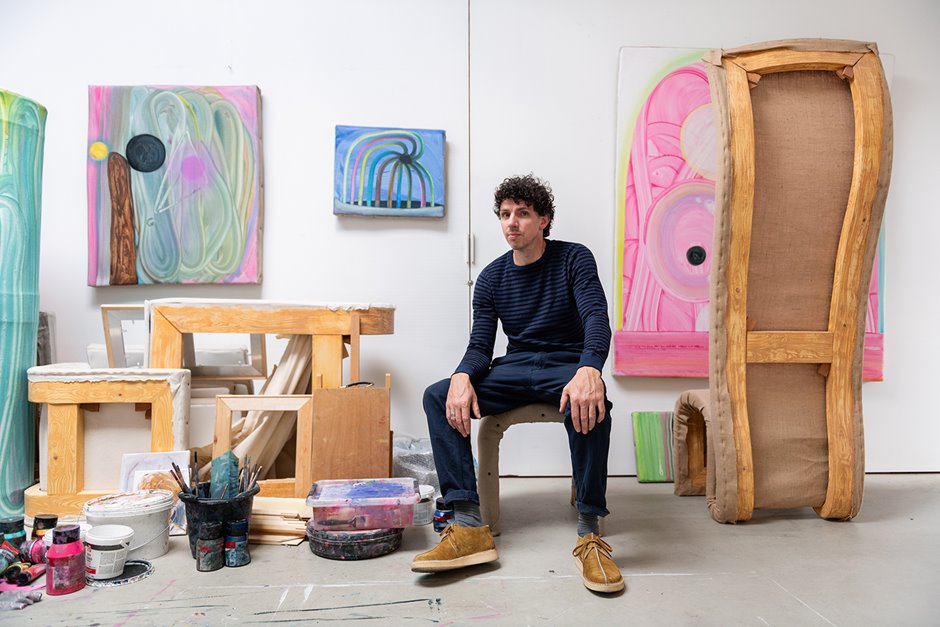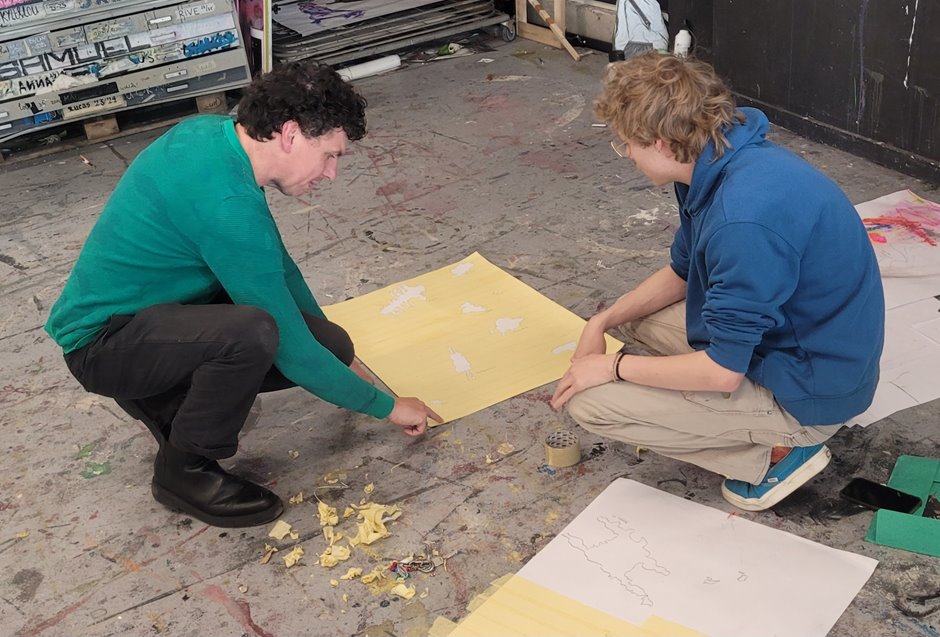Commitment is key at Top Programme HKU Fine Art
For the first time, HKU Fine Art has been credited as an official ‘Top Programme’ by the study choice guide Keuzedigds HBO this year. For second-year student Lieke Ouwerkerk and teacher Sander van Deurzen, this can be explained by Fine Art’s small-scale setting, personal attention and the close-knit community, in which students are actively involved in organising the education. ‘There is a constant exchange of feedback here.’
Commitment is key at Top Programme HKU Fine Art

Sander van Deurzen by Studio LNDW.
Private atelier
Another important advantage for students is that they each get their own private atelier from the second year on. ‘That gives you both freedom and responsibility’, Lieke says. ‘It strengthens the sense of community, and you can learn from each other.’ She also appreciates the workshops that you can use, both at her own location and at the other HKU buildings.Organising together
Both Sander and Lieke see that students are heard. ‘I can notice that feedback is taken seriously’, Lieke explains. ‘Our opinions really matter. Some of the feedback that was suggested last year, has already led to adjustments.’ Sander confirms: ‘Students are actively asked to give their opinion, through surveys at regular times, or just casually during classes. Not as a formality, but it’s just part of how we organise education together.'Some of the feedback that was suggested last year, has already led to adjustments '
Their feedback is not only listened to, but actually leads to adjustments in the programme. One example of this is the strengthening of ties between theory and practice. ‘For many students, they initially felt as two separate worlds’, Sander explains. ‘But we have adjusted the curriculum in such a way that theory and practice are now more logically and naturally connected.’Solo, and together
Nevertheless, there is always room for improvement. Lieke, for instance, sometimes misses the connection with students from other programmes. ‘Later, as an artist, you will also have to cooperate. That’s why I would like it if we’d be doing this more often already.’ Sander understands this. ‘This is an autonomous course, and so there is a strong focus on the individual. Many students consciously choose for this. But indeed: cooperation is becoming increasingly important in the artistic practice. And so we could offer a bit more opportunity for that.’What makes the Fine Art programme at HKU different from those of other academies? For Sander, it is the combination of small-scale education with the access to a broad network. ‘That, along with the international character — although this will unfortunately change in the future due to new regulations. But more diversity of backgrounds and perspectives is enriching for the programme.’

Lively building
What makes the Fine Art programme extra special, are the activities outside the official curriculum. Like the guitar that’s somewhere in the building; Sander once found it on the streets somewhere. ‘That guitar has stayed with us, along with several other instruments by now. Students sometimes play them in the hallways. We also cook together here. This building is really lively.’Both Sander and Lieke can acknowledge: Fine Art has a pleasant atmosphere and close ties. You have lots of room here for personal development, and for exerting influence. As Lieke puts it: ‘you are taken seriously here. As a person, as an artist and as a future professional.’


